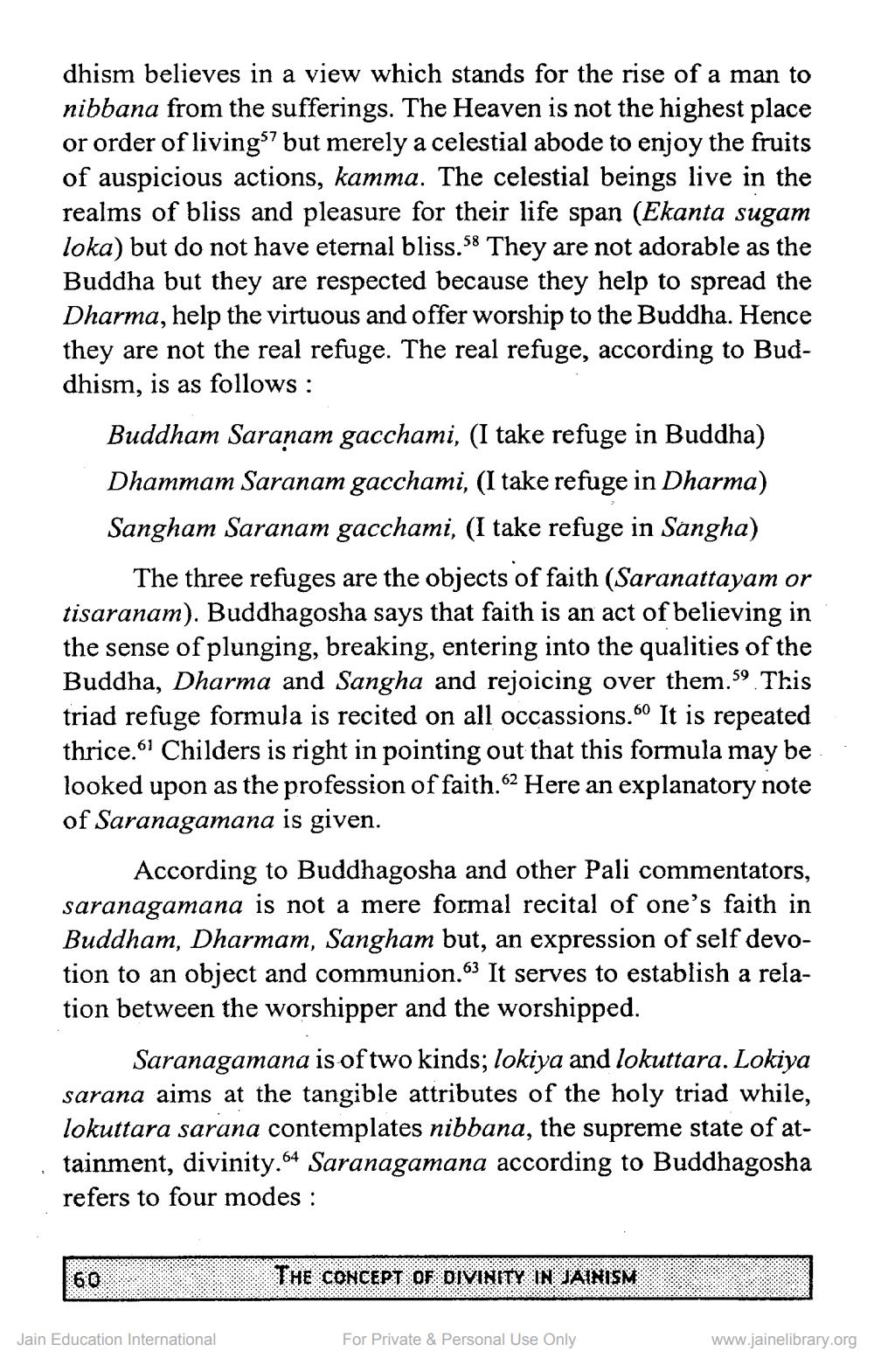________________
dhism believes in a view which stands for the rise of a man to nibbana from the sufferings. The Heaven is not the highest place or order of livings but merely a celestial abode to enjoy the fruits of auspicious actions, kamma. The celestial beings live in the realms of bliss and pleasure for their life span (Ekanta sugam loka) but do not have eternal bliss.58 They are not adorable as the Buddha but they are respected because they help to spread the Dharma, help the virtuous and offer worship to the Buddha. Hence they are not the real refuge. The real refuge, according to Buddhism, is as follows:
Buddham Saranam gacchami, (I take refuge in Buddha) Dhammam Saranam gacchami, (I take refuge in Dharma) Sangham Saranam gacchami, (I take refuge in Sangha)
The three refuges are the objects of faith (Saranattayam or tisaranam). Buddhagosha says that faith is an act of believing in the sense of plunging, breaking, entering into the qualities of the Buddha, Dharma and Sangha and rejoicing over them. 59 This triad refuge formula is recited on all occassions. It is repeated thrice.61 Childers is right in pointing out that this formula may be looked upon as the profession of faith.62 Here an explanatory note of Saranagamana is given.
According to Buddhagosha and other Pali commentators, saranagamana is not a mere formal recital of one's faith in Buddham, Dharmam, Sangham but, an expression of self devotion to an object and communion.63 It serves to establish a relation between the worshipper and the worshipped.
Saranagamana is of two kinds; lokiya and lokuttara. Lokiya sarana aims at the tangible attributes of the holy triad while, lokuttara sarana contemplates nibbana, the supreme state of attainment, divinity.64 Saranagamana according to Buddhagosha refers to four modes :
THE CONCEPT OF DIVINITY IN JAINISM
Jain Education International
For Private & Personal Use Only
www.jainelibrary.org




